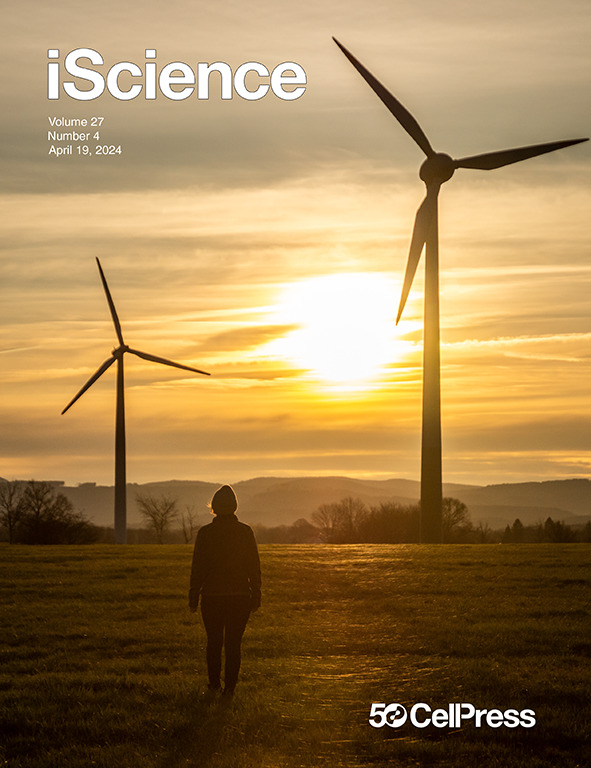丝氨酸合成途径调控人类多能干细胞的心脏分化
IF 4.1
2区 综合性期刊
Q1 MULTIDISCIPLINARY SCIENCES
引用次数: 0
摘要
人类多能干细胞衍生的心肌细胞(hPSC-CM)的分化可以改善使用化学化合物,模拟早期心脏发育。然而,hscs - cm分化效率的差异和其重复性差仍然是一个挑战。在这里,我们报道了一种促进hPSC-CM分化的独特代谢方法,该方法涉及明显抑制从中胚层到心脏中胚层的线粒体氧化磷酸化,这是由丝氨酸合成途径中的限速酶PHGDH调节的。从机制上讲,PHGDH抑制通过阻断电子传递链损害线粒体呼吸,导致ROS水平升高,并通过破坏心咽部中皮层谱系分化促进心肌细胞谱系分化。此外,补充抗氧化剂可以清除ROS,消除PHGDH抑制的影响。总之,我们的研究结果表明,丝氨酸合成途径可以调节心肌细胞谱系规范,为移植提供细胞来源,阐明心脏发育和心脏病发病的潜在机制。本文章由计算机程序翻译,如有差异,请以英文原文为准。

Serine synthesis pathway regulates cardiac differentiation from human pluripotent stem cells
Human pluripotent stem cell-derived cardiomyocyte (hPSC-CM) differentiation can improve using chemical compounds which mimic early heart development. However, variations in hPSC-CM differentiation efficiency and its poor reproducibility have remained a challenge. Here, we report a unique metabolic method to promote hPSC-CM differentiation that involves marked suppression of the mitochondrial oxidative phosphorylation from the mesendoderm to the cardiac mesoderm, which is regulated by PHGDH, a rate-limiting enzyme in the serine synthesis pathway. Mechanistically, PHGDH inhibition impairs mitochondrial respiration by blocking the electron transport chain, resulting in elevated ROS levels and promoting the cardiomyocyte lineage specification by disrupting the cardiopharyngeal mesoderm lineage differentiation. Additionally, antioxidant supplementation can scavenge ROS and eliminate the effects of PHGDH inhibition. Collectively, our findings show that serine synthesis pathway can regulate cardiomyocyte lineage specification and have implications in providing a cellular source for transplantation and elucidating the potential mechanisms of heart development and pathogenesis of heart disease.
求助全文
通过发布文献求助,成功后即可免费获取论文全文。
去求助
来源期刊

iScience
Multidisciplinary-Multidisciplinary
CiteScore
7.20
自引率
1.70%
发文量
1972
审稿时长
6 weeks
期刊介绍:
Science has many big remaining questions. To address them, we will need to work collaboratively and across disciplines. The goal of iScience is to help fuel that type of interdisciplinary thinking. iScience is a new open-access journal from Cell Press that provides a platform for original research in the life, physical, and earth sciences. The primary criterion for publication in iScience is a significant contribution to a relevant field combined with robust results and underlying methodology. The advances appearing in iScience include both fundamental and applied investigations across this interdisciplinary range of topic areas. To support transparency in scientific investigation, we are happy to consider replication studies and papers that describe negative results.
We know you want your work to be published quickly and to be widely visible within your community and beyond. With the strong international reputation of Cell Press behind it, publication in iScience will help your work garner the attention and recognition it merits. Like all Cell Press journals, iScience prioritizes rapid publication. Our editorial team pays special attention to high-quality author service and to efficient, clear-cut decisions based on the information available within the manuscript. iScience taps into the expertise across Cell Press journals and selected partners to inform our editorial decisions and help publish your science in a timely and seamless way.
 求助内容:
求助内容: 应助结果提醒方式:
应助结果提醒方式:


